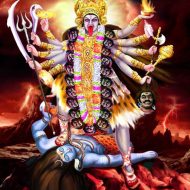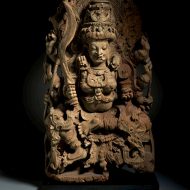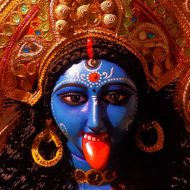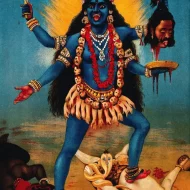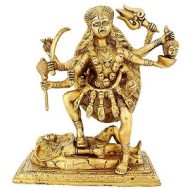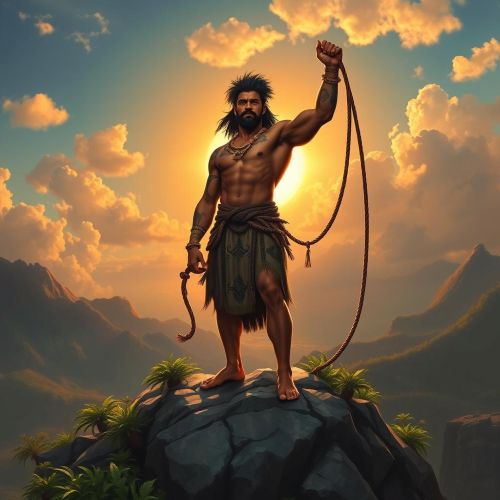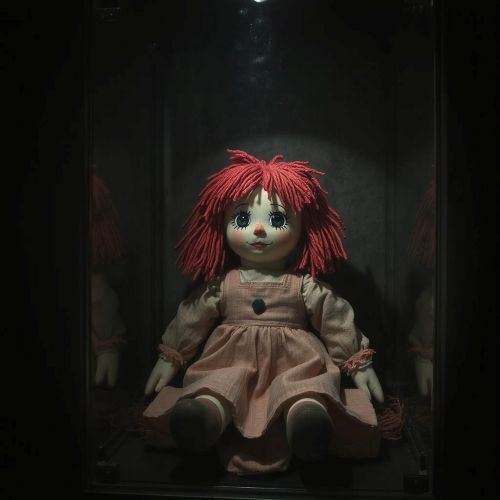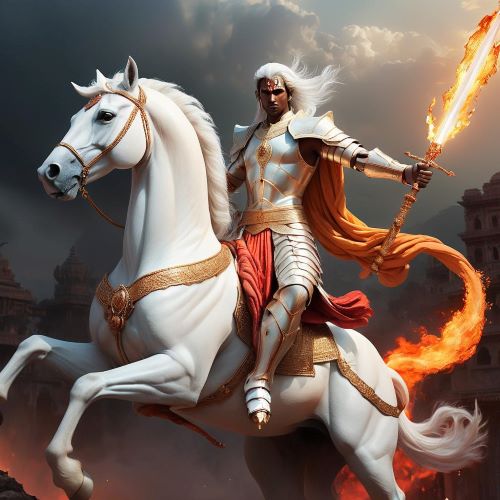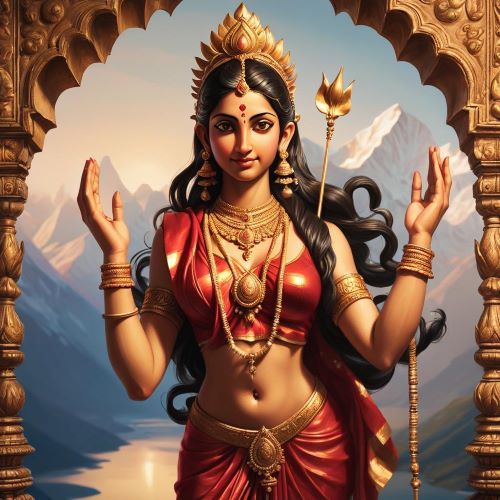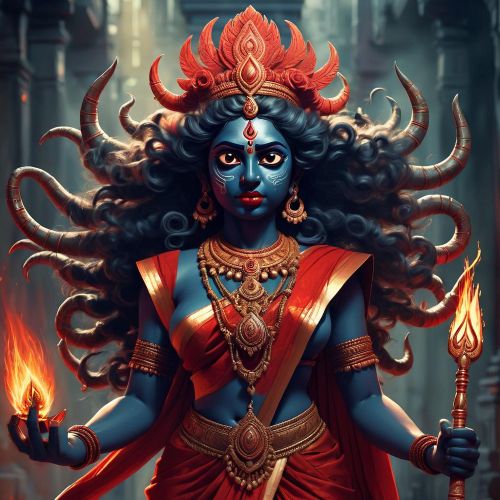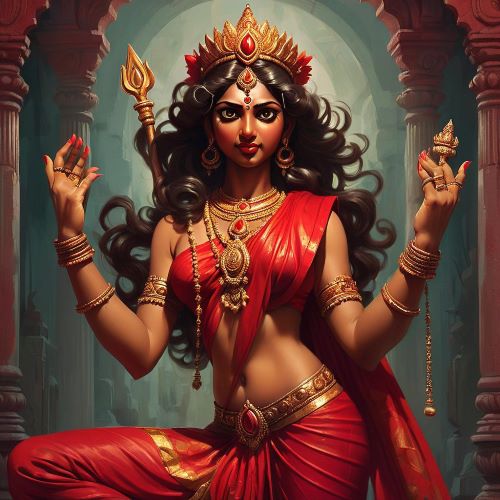Kali : The Mother Goddess
Listen
At a glance
| Description | |
|---|---|
| Origin | Indian Mythology |
| Classification | Gods |
| Family Members | Parvati (Mother) |
| Region | India |
| Associated With | Feminism, Destruction |
Kali
Introduction
Kali is regarded as a goddess of destruction and power in the Hindu tradition. According to this tradition, she is a fierce form of the goddess Adi Shakti, who is the ultimate reality or the power of all things. She is one of the 10 Mahavidyas, or deities, in the Tantric tradition.
Kali’s appearance as a goddess was first observed during Durga‘s birth. According to some, she is the embodiment of the primordial cosmic energy and the mother of the living beings. She is worshipped by various sects and devotional groups as the Divine Mother and the Principal Energy of Adi Shakti. The Tantric and Shakta Hindu sects also believe that she is the Brahman or the ultimate reality. She is regarded as the protector and the one who grants liberation.
Physical Traits
There are two types of depictions of Kali: the four-armed Mahakali avatar and the ten-armed version. In both, she is depicted as black, though she is sometimes depicted as blue in Indian art. Her eyes are red, and her hair is disheveled. Moreover, small fangs protrude from her mouth and her tongue is strangely shaped.
She is often depicted in various forms of clothing, such as a skirt that is made of human arms and a heap of human heads, or she wears a tiger skin. She also sometimes appears as a goddess standing on the side of Shiva while holding a jackal and serpents. The jackal and serpent are usually placed on her right foot to symbolize the right-hand path, which is the more popular path.
Although she is commonly depicted in various forms throughout South Asia, Kali is typically depicted as either black or blue, partially naked, and with a large amount of human limbs and human heads. She is also depicted wearing a skirt made of human arms, and a necklace that has been decapitated. According to the Kalika Purana, Kali is a beautiful and relaxing goddess who rides a lion, holds a sword, and is carrying a lotus. Her right hand is in varabhaya form, and her hair is loose and youthful.
The ten-armed version of Mahakali is depicted as a goddess who appears to be glowing like a blue stone, with ten faces and three eyes on each head. There is no connection between her and Shiva.
Family
Various traditions claim that Kali’s origin. One of these states that she emerged after Durga, who was a warrior goddess, fought a buffalo demon called Mahishasura. She became enraged and transformed into Kali. Kali was born as a black goddess who consumed all the demons that she saw. She then tied their heads with a chain she had around its neck. It was incredibly difficult for the gods or people to control her actions, as these attacks would go on for any wrongdoer. Fortunately, Shiva was able stop Kali’s attack by laying down on her path.
Other names
The feminine form of Shiva is known as Kali, and she is the consort of the deity. The term kala is homonym for black, but it is associated with this word through popular etymology. Kali Mata is also referred to as the dark mother, and she is depicted as either a black or dark goddess.
Powers and Abilities
The Hindu goddess Kali is often associated with violence and sexuality. But, she is also regarded as a mother figure and a goddess of love. Kali is the incarnation of Shiva’s wife, Parvati, and embodies feminine energy, creativity, and fertility. In art, Kali is often depicted as a fearful figure that fights with a knife in its hands. Her skirt is adorned with arms and a necklace of heads.
Modern Day Influence
The tongue of Kali inspired the lips and tongue logo of The Rolling Stones, which was released in 1971. A version of this goddess is also featured in the cover story of a feminist magazine, which was released in 1972. In the movie “Indiana Jones and the Temple of Doom,” which is set in 1935, a cult of Kali devotees is led by a villain known as the Thuggee.
Although she is worshipped throughout India, Kali is culturally marginal and geographically remote. Feminist writers and scholars in the US and New Age movements have viewed her as a symbol of empowerment. Members of these movements have also found her more sexually liberating.
Related Images
Frequently Asked Questions
What is lorem Ipsum?
I am text block. Click edit button to change this text. Lorem ipsum dolor sit amet, consectetur adipiscing elit. Ut elit tellus, luctus nec ullamcorper mattis, pulvinar dapibus leo.
What is lorem Ipsum?
I am text block. Click edit button to change this text. Lorem ipsum dolor sit amet, consectetur adipiscing elit. Ut elit tellus, luctus nec ullamcorper mattis, pulvinar dapibus leo.
What is lorem Ipsum?
I am text block. Click edit button to change this text. Lorem ipsum dolor sit amet, consectetur adipiscing elit. Ut elit tellus, luctus nec ullamcorper mattis, pulvinar dapibus leo.
What is lorem Ipsum?
I am text block. Click edit button to change this text. Lorem ipsum dolor sit amet, consectetur adipiscing elit. Ut elit tellus, luctus nec ullamcorper mattis, pulvinar dapibus leo.
What is lorem Ipsum?
I am text block. Click edit button to change this text. Lorem ipsum dolor sit amet, consectetur adipiscing elit. Ut elit tellus, luctus nec ullamcorper mattis, pulvinar dapibus leo.


